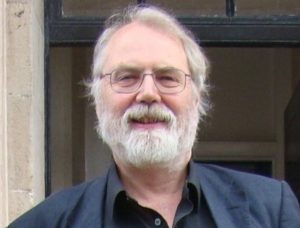The Pali Text Society is pleased to annouce the availability of the 3 published volumes of A Dictionary of Pāli online at gandhari.org. The Dictionary is free for all to search and use. The Pali Text Society’s Pali-English Dictionary and other dictionaries of ancient South Asian languages are also available on this site.
Change of Address
The PTS’ registered office address has changed. Our new postal address is Pali Text Society, c/o Critchleys LLP, Beaver House, 23–38 Hythe Bridge Street, Oxford, Oxfordshire OX1 2EP
Email continues to be our preferred method of communication. The Society can be contacted at info@palitextsociety.org
2024 I.B. Horner Memorial Lecture
The Pali Text Society is pleased to announce that the 20th I.B. Horner Lecture will be given by Dr Aleix Ruiz Falqués in Paris on 27th September 2024: ‘Organic Pali Grammar: Makāralopa’s Encyclopedia of Pali Grammar – A Burmese 18th-century Manual for Pali Students.’ More information to follow soon.
Paul Dundas 1952–2023
Paul Dundas, a member of the Council of the PTS since 2005, sadly died in April this this year at the age of 70. At the meetings of Council held in March and September each year, Paul was a wonderfully humane and helpful presence. He will be greatly missed. We reproduce below a short obituary posted on the Indology list shortly after his death by his former colleagues at the Universtiy of Edinburgh, Peter Bisschop and John Brockington.

Paul started studying Sanskrit and Prakrit as an undergraduate at the University of Edinburgh with Michael Coulson and had a short period as a postgraduate at the University of Cambridge with among others, John Brough and K.R. Norman, before accepting the post in Sanskrit at Edinburgh in 1976, where he continued to teach and research throughout his entire career until his retirement as reader only a few years ago. He was a member of the Council of the Pali Text Society, and the recipient of the Prakrit Jñānabhāratī International award in 2019. Paul was a towering figure in the field of Jain and Prakrit studies and will be known to most scholars and students as the author of The Jains, of which the first edition appeared in 1992 and which continues to be the most reliable introduction to Jainism to the present day. From his many other publications in the field we would like to single out History, Scripture and Controversy in a Medieval Jain Sect, published in 2007, a book of vast and penetrating learning with a relevance far beyond that of medieval Jainism alone. But Paul also had a great passion for all things Sanskrit, reading across the entire spectrum of Sanskrit literature. Testimony to this is his wonderful translation of Māgha’s Śiśupālavadha, published in the Murty Classical Library of India in 2017, the first complete English translation of this truly difficult Sanskrit Mahākāvya. His latest publication appeared in 2022, in the Eivind Kahrs felicitation volume Jñānapraśaṃsā: “Sectarian Confrontation as Theatrical Diversion: Observations on Yaśaścandra’s Mudritakumudacandraprakaraṇa and the Jain Debate at Aṇahillapaṭṭana”. Paul was still actively engaged in several other projects. His death is a great loss to the field.
Paul was one of the most learned and well read people we have known. He was also most generous and kind, and we will sorely miss his presence and humour.
Our thoughts are with his partner, Rowan Flett.
Pali Text Society welcomes new Office Administrator
After 20 years with the Pali Text Society, Karen Wendland has left to explore new opportunities. We extend our thanks to her for her many years of service and wish her all the very best in the future.
We have recruited a new Office Administrator, Andrew Bishop, and he has now started with the Society. All contact information remains the same. If you have any questions, please email info@palitextsociety.org
